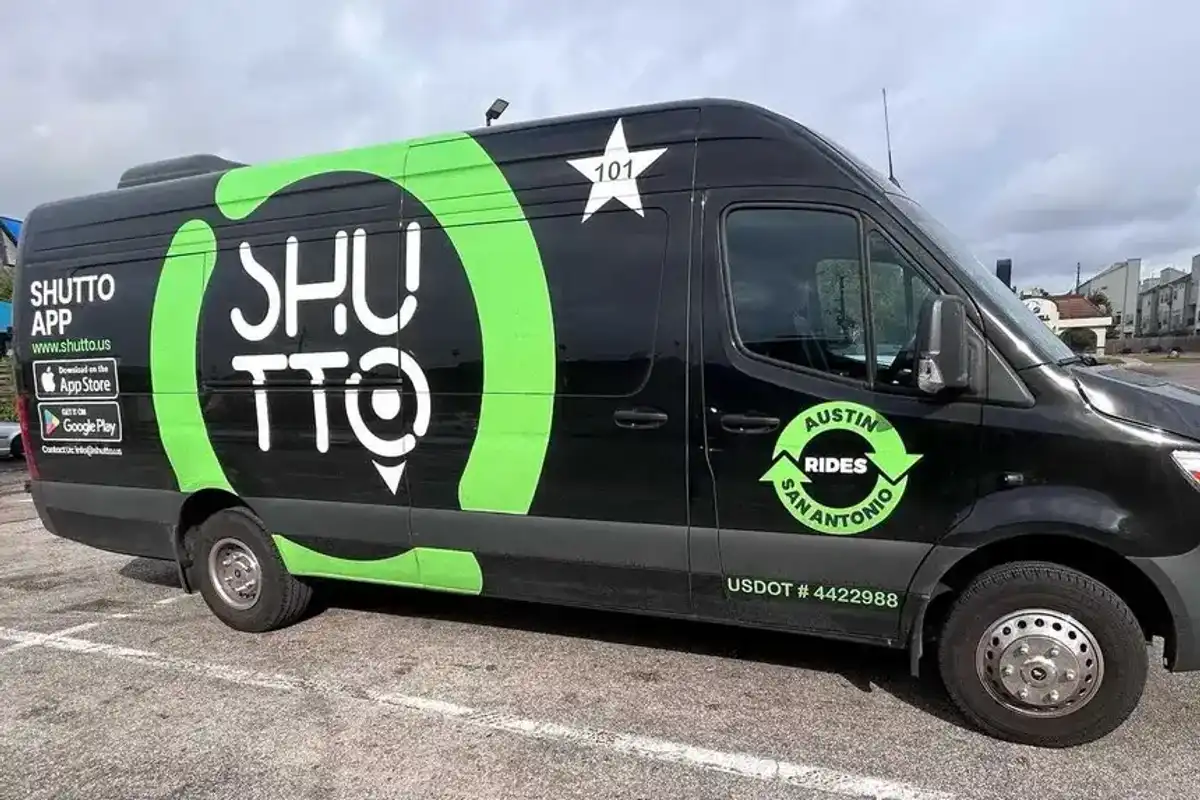Houston medical devices company using NASA balancing technology prepares for commercial launch
From space to marketplace
In her postdoctoral work at NASA, Katharine Forth and her colleague were tasked with finding a new way to track the balance of astronauts on the moon.
"The machines typically used for balance measurement can be as large as a telephone booth, so we invented a new way to measure postural control using a much smaller mechanism that fit inside a moon boot," Forth says.
She didn't know it at the time, but working on this technology would lead her to create Zibrio, The Balance Company with her colleague, Erez Lieberman Aiden.
Zibrio is a health company that aims to be the gold standard of measuring balance. The Zibrio scale calculates users' weight like a typical scale and rates their balance on scale of 1 to 10.
The scale gathers data from your weight, your postural control, your muscles and other factors to calculate the rating. Andrea Case-Rogers, chief experience officer at Zibrio, describes a perfect rating of 10 as elusive for most, or "Simone Biles on a good day."
After seeing their rating, users can identify any problems and start taking steps to improve their balance. Zibrio will also come with a smartphone app, so users can track their balance, any fluctuations and progress over a long-term period.
By using the scale and app together, users can gain a greater understand of what in their lifestyle is helping versus hurting their balance.
From space to the marketplace
After co-founding Zibrio together in 2015, Forth and Aiden have taken the company a long way since then.
Zibrio is a finalist for the 2019 SXSW Pitch in the health and wearables category. In 2015, the company was part of the Texas Medical Center's TMCx medical devices cohort. Both programs highlight the innovative technology being used as well as the big impact that Zibrio could have for both consumers and clinicians.
Zibrio already has conducted clinical trials all over Houston by working with Memorial Hermann and UT Physicians, and the company is currently focused on fundraising. Forth and her team of five will use these funds to get the scale and smartphone app consumer-ready and launched.
The commercial launch for both the scale and app is planned for later this year.
"We're currently finalizing the design with the manufacturer, so they can make the scale available commercially," Forth says. "Since 2015, we've been fundraising, building prototype scales and conducting clinical trials."
Finding balance at any age
A common misconception is that our balance deteriorates in older age. In actuality, a lifetime of behavior and activity affects our balance in later years. Falls are the leading cause of accidental death and unexpected injuries in older adults.
"If you have been mostly sedentary your whole life, by the time you hit your later years, your lower limb strength is weakened affecting your ability to move." Forth says, "so many factors feed into your balance, which means there are so many things that can be done to lower your fall risk."
When Forth and her team ran a balance program at a senior living facility, they halved the number of falls in two years. By creating an awareness of balance, they were able to drive changed behaviors in the seniors, in turn, improving their balance.
According to Case-Rogers, Zibrio is bringing the balance conversation to people in 60s and 70s who want to keep their lifestyle and not deal with mobility and health issues later. They want to show investors that there is a market for wellness product like Zibrio among older people.
Zibrio will sponsor the National Senior Games, the largest multi-sport competition for seniors in the world, this summer in Albuquerque. With over 10,000 athletes, Forth and her team are excited to introduce Zibrio to a larger audience.
Forth firmly believes balance measurements should be a part of routine wellness exams and home self-monitoring, especially in later years.
"When athletes stand on a scale and see their number, it's like a light goes on in their heads and they realize how important balance is," says Forth. "That's what I love, we have this great product that opens up the conversation about and is really helping people in middle age and beyond."





